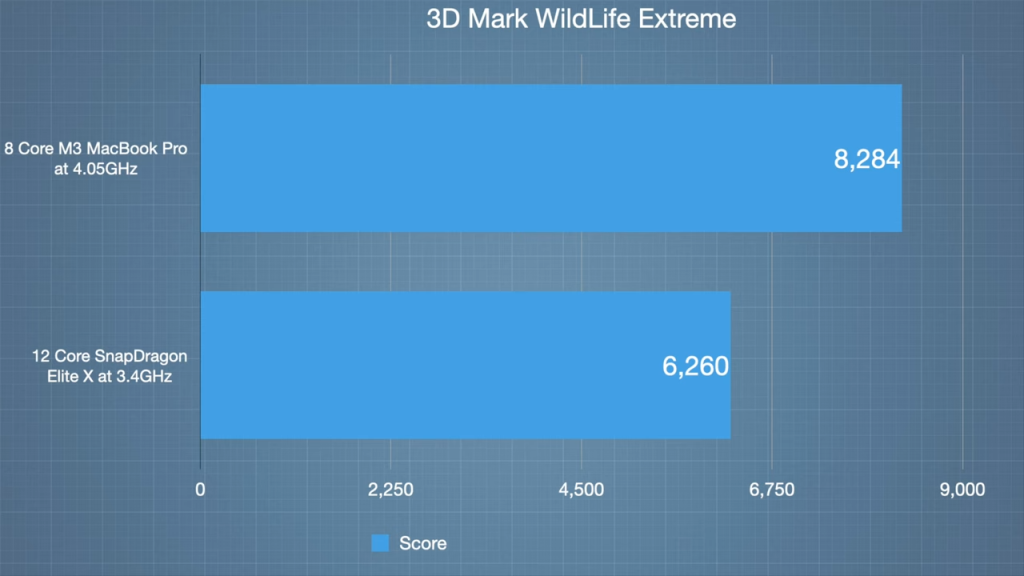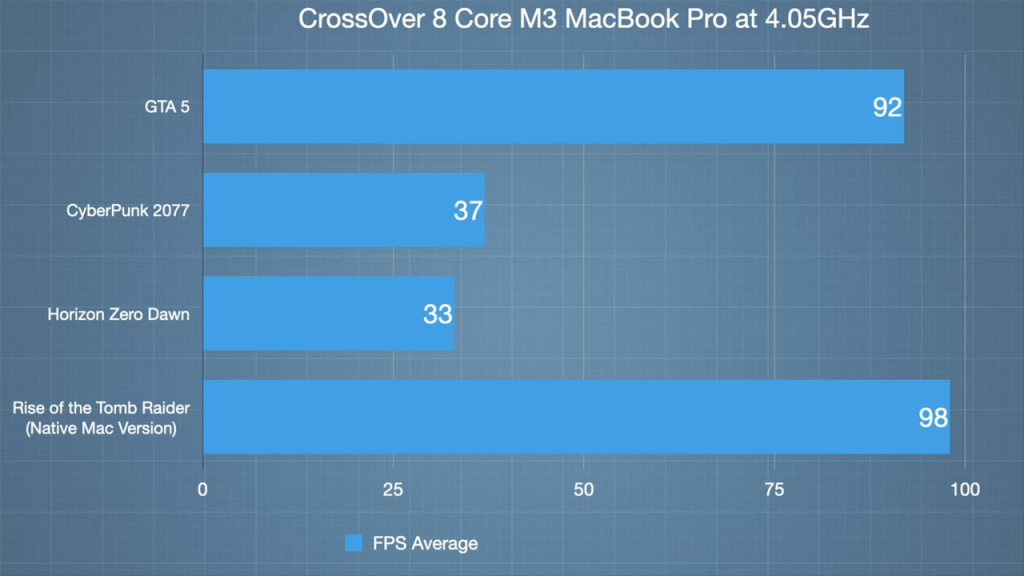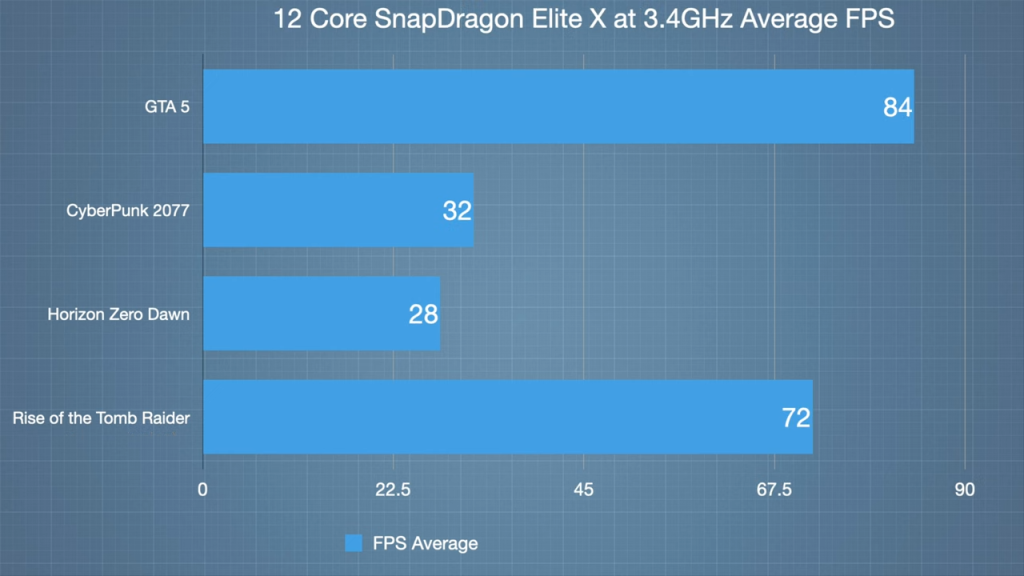Snapdragon X Elite is one of the best things that has happened to Windows laptops in recent years. It’s the most powerful chip for Windows and, most importantly, a close competitor of Apple Silicons.
Apple M-series chips have been dominating over Intel and AMD for a long time, but Qualcomm may have an answer to that. The company has promised a huge performance upgrade and battery efficiency on the Snapdragon X Elite chip.
Now that the Snapdragon X Elite-powered laptops are out, we have some benchmarks and real-world test data to see how they compare with Apple’s M3-powered Macs, which are known for stellar performance and battery backup.
| Snapdragon X Elite | Apple M3 | |
|---|---|---|
| Model Number | X1E-80-100 | – |
| Process Node | 4nm TSMC | 3nm TSMC |
| Instruction Set | ARMv9 | ARMv8 |
| CPU | 12 cores (12 x performance cores) Up to 3.4 GHz Dual-core boost up to 4.0 GHz 42MB cache (shared) | 12 cores (4 x performance cores + 4 efficiency cores) Up to 4.05 GHz 16MB cache (shared) |
| GPU | Qualcomm Adreno GPU Up to 3.8 TFLOPs | Apple M3 GPU Up to 4.1 TFLOPs 10 or 12 cores |
| NPU | Qualcomm Hexagon NPU Up to 45 TOPS | 10 cores Up to 18 TOPS |
| RAM | LPDDR5x Up to 64 GB 8448 MT/s transfer rate 135 GB/s bandwidth | LPDDR5 Up to 24 GB 6400 MT/s transfer rate 100 GB/s bandwidth |
| Connectivity | Wi-Fi 7 Bluetooth 5.4 | Wi-Fi 6E Bluetooth 5.3 |
[Note: This article compares the Snapdragon X Elite (X1E-80-100) with the Apple M3. There also exist more powerful Snapdragon X Elite chips with model numbers X1E-84-100 and X1E-00-IDE. But for this comparison, we’ll be using the Snapdragon X Elite (X1E-80-100).]
Also Read: Here’s the List of Laptops Powered by Snapdragon X Elite
Snapdragon X Elite vs Apple M3: Geekbench
Geekbench is a popular benchmark to test the CPU performance of chipsets. When both the chips were put to the test, the Snapdragon X Elite was able to score 2,753 points in the single-core test, whereas the M3 chip surpassed it by scoring 3,021 points.
However, the multi-core result is in favor of Snapdragon, and that too by a good margin. The Apple M3 managed to pull off 11,566 points, while the Snapdragon X Elite scored 14,151 points in the multi-core test on Geekbench 6.
The Apple M3 gets an edge over the Snapdragon X Elite in the single-core test. But the Snapdragon X Elite stuns the M3 chip in the multi-core test by leading with a big margin.
Snapdragon X Elite vs Apple M3: CineBench
CineBench is another popular benchmarking platform to access a computer’s CPU and GPU capabilities using real-world 3D rendering tasks.
The Snapdragon pulls off 1,738 and 13,487 points in the single-core and multi-core tests, respectively. Apple M3, on the other hand, has scored 1,892 points (single-core) and 10,394 points (multi-core).
The CineBench results are similar to that of Geekbench’s. Again, the Snapdragon X Elite leaves behind the Apple M3 by a big margin in multi-core tests while achieving a nearly same single-core score.
A higher multi-core core suggests that the Snapdragon X Elite might do a better job than the Apple M3 when doing tasks that require more than one core, such as video editing, 3D rendering, etc.
Snapdragon X Elite vs Apple M3: 3D Mark WildLife Extreme
3D Mark WildLife Extreme measures the GPU performance of a device. It’s a demanding test that uses features like high-rendering graphics, more complex geometry, and advanced graphics techniques.
On the 3D Mark WildLife Extreme benchmark, the Snapdragon X Elite has scored 6,260 points, whereas the Apple M3 gets 8,284 points.
The test suggests Apple M3-powered computers have better GPU performance than Snapdragon X Elite-powered computers. Keep in mind that 3D Mark WildLife Extreme focuses on short-term performance.
Snapdragon X Elite vs Apple M3: Gaming Test
Apple M3 achieves higher average frames per second (FPS) in all tested games. It clearly outperforms the Snapdragon X Elite. This means you’ll have a better gaming experience with Apple M3-powered Macs than with Windows computers powered by Snapdragon X Elite.
Snapdragon X Elite vs Apple M3: Battery Efficiency
Qualcomm claims 2X battery life on a laptop powered by the Snapdragon X Elite than one powered by the Intel Core Ultra 7 155H. It’s probably the best power-efficient chip for Windows, but how does it compare with Apple M3?
In the battery test performed by a popular YouTuber, Dave2D, the Asus Vivobook S15 (with 70 Wh battery pack) lasted for 10 hours and 26 minutes under light load, close to the MacBook Air M3 (11 hours and 18 minutes).
Tom’s Guide reports a drop from 100% to 47% after 12 hours of mixed usage (Photoshop, 20+ Chrome tabs, music, and hours of Netflix). This is a rare battery life seen on Windows laptops. It was only offered by Apple Silicons.
Final Thoughts
Qualcomm’s X Elite early reviews are very promising. It offers great performance, NPU capabilities, and battery life.
Apple Silicons finally have a strong competitor. This is the beginning of a new era for Windows, and it’s very exciting. It will also be exciting to watch what Intel and AMD have in store to remain top choices among Windows buyers.














